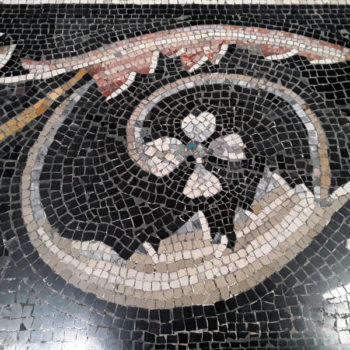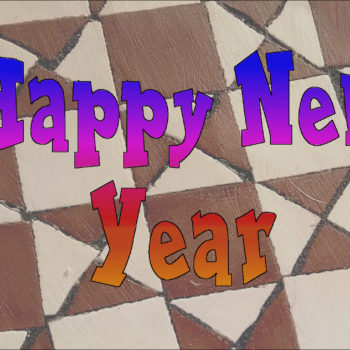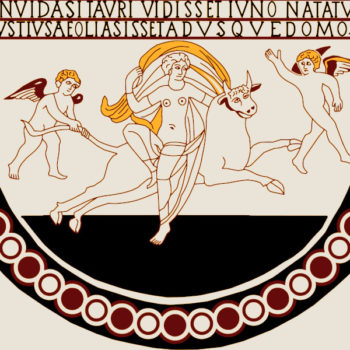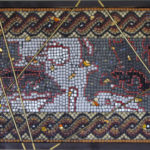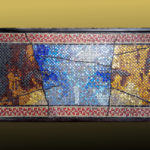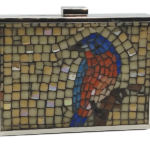A Gallo_Roman mosaic discovered by a railroad company employees
In 1887, during construction work on a railway line, the remains of a villa and a gallo-roman mosaic were discovered in Doulaincourt, Haute marne. Local archaeologists visited the site. Here below is the report of their investigations:
The Société Générale des Chemins de Fer Economiques inaugurated the line linking Gudmont to Rimaucourt through Doulaincourt on June 29, 1887. During the construction of the railway, the substructures of a Gallo-Roman villa were unwittingly cut when opening a trench at the limit of the territory of Doulaincourt. These remains from a remote time did not attract the attention of the workers, who made no attempt to excavate or investigate them and did not bother telling anyone about this discovery, which they probably had not even noticed.
In 1890, we found in the surroundings, at a place called Trite or St Epvre, debris of striated tiles and Chevillon stone slabs. At this place excavations were attempted which proved fruitless, when a worker picked up a mosaic cube in the embankment of the railway. Encouraged by this discovery, we found a few steps away a single faced wall which had been cut by the embankment, then at 2.70 m another similar one facing it . Having thus circumscribed the field of investigations, we immediately set to work to undertake more detailed research. These allowed us to discover the remains of a villa. Among the most interesting remains was a geometric mosaic unfortunately completely collapsed among rubbles.

The mosaic with geometric designs is interesting for the ingenuity of the interlacing and the number of colors used . The 8 to 12 mm square cubes include the following nine shades : white, black, pale blue, dark blue, yellow, red, red brown, light purple and gray yellow. The red cubes are made of shards of fine pottery, the red-brown ones with porphyry, the others are just simple fragments of various limestones.
Following the collapse of its support, this mosaic is reduced to fragments so small that the complete reconstruction of it is impossible. However, we were able to take an approximate sketch of the ingenious arrangement of the interlacing on a piece of about half a square meter which had remained horizontal, but whose cubes had so little adhesion between them that it was impossible to consider transporting it, or even cleaning it to clearly see the design. This mosaic was to form the paving of the atrium or inner courtyard of the villa.
We also found :
-
fragments of stucco, without interest
-
large iron nails
-
fragments of pottery
-
two earthenware terrines, a soup plate and an earthenware vase.

Report by D. de Gésincourt year 1895 / Archives of the Société d’Archéologie de Chaumont ( 1873 )
I colorized the report’s drawing following the indications of the original drawing.
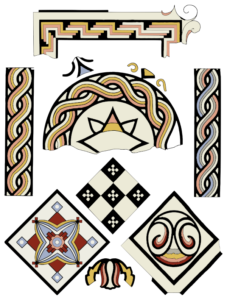
You can download a PDF of this article HERE


